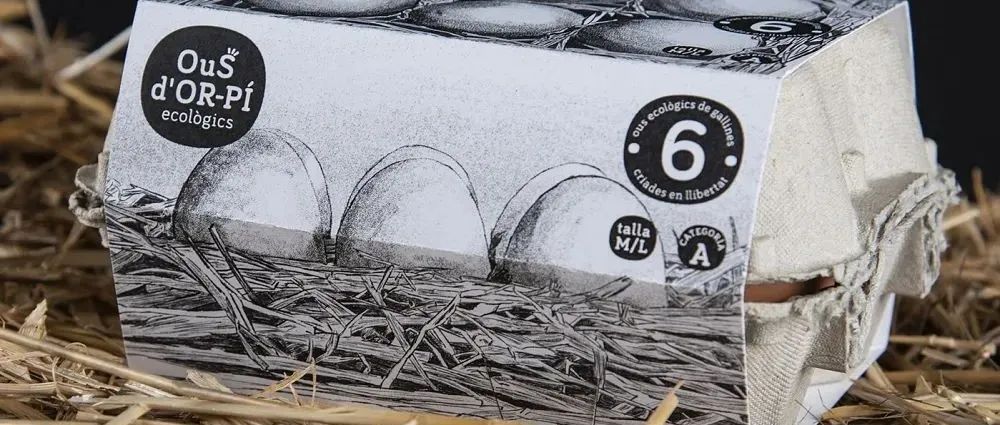HOK创始人之一、世界知名建筑师Gyo Obata先生于2022年3月8日去世,享年99岁。Gyo在1955年与两位创始人共同创立了HOK,并提出了通过卓越的设计提高人们生活品质的愿景。他们将HOK从一家美国圣路易斯本地的建筑公司发展成为世界上最受尊敬的全球性设计、建筑、工程和规划公司之一。他杰出的职业生涯长达60年。从2012年退休到2018年的时间里,Gyo也一直在HOK的圣路易斯办公室担任设计顾问并参与项目。
“Gyo在HOK的职业生涯一直持续到90多岁,他是包括我在内的几代设计师的导师,”HOK主席兼首席执行官Bill Hellmuth先生说道。“作为我们大家的榜样,他带领HOK成为美国最大的建筑设计公司,同时从未错过他为重要项目担任设计师的机会。”
Gyo在设计中体现的创新精神基于他的一个基本信念,即每个项目都必须在没有先入之见的情况下进行,并旨在设计为满足其服务的人民和社区的需求、价值观和愿望。Gyo不会将自己的意愿强加在一个项目上,而是密切关注客户的需求,让项目本身指引建筑设计,从而能够设计出能够让访客和居民享受其中并具有意义的建筑。
“Gyo体现了建筑行业正直、高尚的一面,”曾担任过HOK主席的Bill Valentine说道。“Gyo的设计不是为了迎合时代潮流或发表个人言论,而是为了提高生活品质。他是一个善良且体贴的人,与同事和客户都保持友好的关系。人们信任他,而这是将图纸转化为建筑的一个重要部分。”
作为可持续设计的强力支持者,Gyo的作品以材料的合理使用以及与自然环境的和谐性为特点。“如果你把建筑视为与周围环境的对话,那么Gyo就是非常善于与环境对话的设计师,”George McCue在1983年《圣路易斯》杂志关于Gyo的封面故事中写道。“他的建筑拥有的最大优点是它们对环境表现出的尊敬的态度。
Gyo是一位倡导整体性设计方法的设计师,即在设计过程中整合建筑、工程、室内、规划和景观设计,由一个多学科设计团队提供整体服务。这种方法推动了HOK不断扩展到新的专业领域、市场业务及地理区域。
美国密苏里州圣路易斯修道院礼拜堂 | Community of Christ Temple in Independence, Missouri
在担任HOK设计负责人的50年间,Gyo在世界各地塑造了诸多地标性建筑,且屡获奖项。具有代表性的作品包括美国密苏里州圣路易斯修道院礼拜堂(1962年);美国休斯顿The Galleria购物中心(1970年);达拉斯—沃思堡国际机场(1973年);百时美施贵宝公司普林斯顿园区(1973);华盛顿特区国家航空航天博物馆(1976年);沙特阿拉伯利雅得哈立德国王国际机场(1983年);沙特阿拉伯利雅得沙特国王大学(1984年);美国密苏里州基督社区教堂(1994年);洛杉矶日裔美国人国家博物馆展馆(1998年)。
他享受新的一天带给他的无限可能性。除了与家人和亲友共度时光,他的爱好还包括园艺、网球、艺术、旅行、阅读、伴侣犬、鸟、音乐、戏剧、歌剧、电影和烹饪。
作为设计师的一生
Gyo在1923出生于美国旧金山。他的父母是来自日本的艺术家,移民到美国后在旧金山相遇。他的父亲,Chiura Obata,将日本传统的烟灰墨绘画风格引入美国西海岸,而他的母亲Haruko Obata为日本插花艺术做了同样的贡献。“我们的房子就像一个工作室,总是摆满了画和花,”Gyo在2010年Marlene Ann Birkman撰写的《Gyo Obata: 建筑师 | 客户 | 见解》一书中提到。“我的父母都是很好的老师,他们教了我人生最基本的一课:认真倾听。”
Gyo与他的妹妹Yuri,母亲Haruko以及父亲Chiura。| Gyo with this sister, Yuri, and his parents, Haruko and Chiura Obata.
在Gyo18岁时珍珠港事件爆发,反日运动席卷美国。1942年,他就读于加利福尼亚大学伯克利分校的建筑专业,但大学一年级时就被中断。美国当时将大约11万7千名拥有日本血统的人强制搬迁到拘留营,但他在父母与兄弟姐妹被迁移的前一晚登上了去圣路易斯的火车。Gyo的父亲获得了当地教务长的特别许可,允许他离开该地区,从而可以继续在华盛顿大学(Washington University)攻读建筑学。华盛顿大学是当时美国唯一一所接受日裔美国学生的大学。
1945年,他在华盛顿大学获得建筑学学士学位,之后继续在密歇根州克兰布鲁克艺术学院深造。在那里,Gyo跟随芬兰建筑大师埃利尔·沙里宁(Eliel Saarinen)学习,他是圣路易斯标志性建筑圣刘易斯拱门的建筑师埃罗·沙里宁(Eero Saarinen)的父亲。1946年,Gyo获得建筑和城市设计硕士学位。
“沙里宁的教诲对我产生了巨大且正面的影响,”Gyo在2006年的一次采访中说。“他强调了设计中从小到大每个元素之间的关系,以及整合它们的重要性。从那时起,我一直对大型项目感兴趣,在这类项目中,小细节必须与大的整体和谐呼应。”
在阿拉斯加州海岸附近的阿留申群岛服役后,Gyo于1947年加入Skidmore,Owings & Merrill(SOM)的芝加哥办公室,担任设计师。
美国圣路易斯兰伯特国际机场 | St. Louis Lambert International Airport
1951年,圣路易斯建筑公司Hellmuth,Yamasaki & Leinweber(HYL)聘请他担任山崎实(Minoru Yamasaki;音译雅马萨奇)的设计助理,山崎实后来设计了纽约世贸中心。Gyo与山崎实的合作包括于1956年投入使用的美国圣路易斯兰伯特国际机场标志性航站楼。这座建筑被认为助力了改变机场的视觉词汇,是现代机场航站楼的先驱,以流线型线条和一系列低悬拱门为特色呈现了飞行的概念。
1955年,当HYL重组为Hellmuth、Obata & Kassabaum(HOK)时,32岁的Gyo被任命为设计负责人。与领导市场业务和商务拓展的George Hellmuth(1907-1999)和负责监督设计制作的George Kassabaum(1921-1982)一起开创了三方运营商业模式,这也定义了现在多专业建筑公司的运营模式。
HOK三位创始人:Gyo Obata, George Hellmuth与George Kassabaum | HOK’s founders: Gyo Obata, George Hellmuth and George Kassabaum
在圣路易斯留下印记
Gyo早期在HOK的大部分设计作品都是为二战后不断增长的人口建造的学校建筑。圣路易斯郊区的布里斯托尔小学(Bristol Primary School)等项目不仅解决了战后对教室的需求,还引入了创新的方式来创建共享和协作的教学空间——这一理念将继续定义Gyo的建筑。
1961年,Gyo帮助HOK赢得了其第一个大型大学项目:南伊利诺伊大学爱德华兹维尔分校(SIUE)新校区的规划和设计工作。Gyo具有创新性的校园总体规划背离了当时盛行的大型、纪念性和典型的学校建筑风格,成功塑造了当时的南伊利诺伊大学校长Delyte W. Morris所说的“大胆和实验性机构”。
美国圣路易斯修道院礼拜堂 | Priory Chapel at Saint Louis Abbey
美国圣路易斯修道院礼拜堂的创新设计使他获得了国际性赞誉。该建筑的标志性圆形立面由三层白色的、抛物线拱形薄壳混凝土结构构成。
圣路易斯大主教Joseph Cardinal Ritter在开幕仪式上说:“这个为上帝的献礼,也是人类聪明才智的完美体现。“1962年出版的《时代》杂志把它称为“美国最新、或许也是最惊人的圆形教堂”,《建筑文摘》将其结构体系称为“美国最伟大的宝藏之一”.
Gyo设计的其他圣路易斯标志性建筑包括圣路易斯科学中心詹姆斯·S·麦克唐纳天文馆(1963年);雀巢普瑞纳宠物食品公司总部(1969年);美国中心会议中心(1977年);大都会广场一号(1988年);圣路易斯动物园生物世界(1989);圣路易斯Galleria购物中心(1991年);密苏里州历史博物馆爱默生中心(1999);波音领导力中心(1999);托马斯·F·伊格尔顿美国法院大楼(2000年);华盛顿大学医学院法雷尔学术与教学中心(2005);和Centene 大楼(2010年)。
基于他对圣路易斯地区的重大贡献,他于1992年入选圣路易斯名人堂。
扩大影响力
Gyo的创新设计解决方案塑造了一系列具有代表性的文化和市政建筑,在满足其功能要求的同时创造了令人难忘的公共空间。
美国休斯顿The Galleria购物中心 | The Galleria in Houston
美国休斯顿The Galleria购物中心于1970年开业。Gyo通过设计了一个多层的室内购物环境,并在中心设置一个溜冰场,为购物中心塑造了一个前所未有的商业环境。
1973年,Gyo设计了达拉斯—沃思堡国际机场,成为了美国第一个区域机场,以其便利性和简洁、干净的细节而闻名。
美国国家航空航天博物馆 | National Air and Space Museum in Washington, D.C
美国国家航空航天博物馆位于华盛顿特区的国家广场上,是Gyo在设计上强调结构、空间和光线等元素的典范。这座建筑的简洁、巨大的石灰石体量通过中庭连接起来,提供了一个实用的空间,可以通过各种展览有效移动大量的游客。在1976年7月4日美国200周年庆典期间举行了落成典礼,是世界上参观人数最多的博物馆之一。
Gyo设计的里维斯广场坐落在旧金山市的一个山坡上,场地内还设有公园和喷泉。《旧金山纪事报》建筑评论家Allan Temko把里维斯广场称为“送给城市的礼物”,并被1982年的《时代》杂志命名为“年度建筑”。至今还留有其建筑原貌并与旧金山内河码头一起构成优美的历史城市环境。
Gyo还为HOK在欧洲、中东和亚太地区的拓展做出了贡献。
他在沙特阿拉伯设计了两个标志性项目,确立了HOK能够在世界任何地方都能设计大型项目的声誉。
沙特阿拉伯利雅得哈立德国王国际机场 | King Khalid International Airport
1983年,沙特阿拉伯利雅得哈立德国王国际机场明确了国际机场可以作为通往城市、国家和整个文化的门户的概念。机场的包括三角形的使用等一些主要构思,源自伊斯兰宗教和世俗伊斯兰的建筑结构。
沙特阿拉伯利雅得沙特国王大学 | King Saud University
沙特阿拉伯利雅得沙特国王大学于1984年投入使用,它刻画出了一座沙漠城堡的感觉,在其封闭的校园里设置了特别的空间。围绕运动的便利性、学科分离、气候影响以及漫射光等理念激发了设计灵感。
Gyo是美国建筑师学会院士,并在2002年获得了美国建筑师协会圣路易斯分会颁发的荣誉奖金奖。其他奖项和荣誉包括日裔美国人国家博物馆颁发的终身艺术成就奖(2004年);圣路易斯艺术与教育委员会颁发的终身成就奖(2008年);华盛顿大学山姆·福克斯杰出奖院长勋章(2008年);以及密苏里州历史学会颁发的托马斯·杰斐逊学会奖(2016年)。他曾参与多数著作,包括《Gyo Obata: 建筑师 | 客户 | 见解》(2010)。
Gyo Obata, 美国建筑师学会院士 (1923年2月28日 – 2022年3月8日)
1923: 出生于美国旧金山
1941: 就读于美国加州大学伯克利分校
1945: 获得美国圣路易斯华盛顿大学建筑学士学位
1946: 获得美国密歇根州克兰布鲁克艺术学院与城市设计硕士学位
1946-1947: 服役
1947: 加入Skidmore,Owings & Merrill(SOM)芝加哥办公室
1951: 加入Hellmuth,Yamasaki & Leinweber(HYL)底特律办公室
1955: 成为Hellmuth、Obata & Kassabaum创始合伙人
1981: 任命为董事会主席
1982: 任命为主席/董事会主席
1990: 任命为首席执行官/董事会主席
1993: 任命为联合主席/集团设计总监
2004: 转为创始合伙人
2012: 退休
2012-2018: 担任设计顾问
请访问hok.com进一步了解Obata先生的传奇人生与职业生涯。
Gyo Obata, Founding Partner
at HOK, Dies at 99
Gyo Obata, FAIA, a world-renowned architect who cofounded HOK in 1955 with a vision for enhancing lives through building design, passed away on March 8, 2022. He was 99.
Gyo was one of three principals who built HOK from a regional, St. Louis-based architectural practice into one of the world’s most respected global design, architecture, engineering and planning firms. His distinguished career spanned six decades. From the time of his retirement in 2012 and continuing into 2018, Gyo maintained an office in HOK’s St. Louis studio, where he regularly served as a design advisor to his colleagues.
“Gyo’s extraordinary career at HOK continued into his 90s, and he served as a mentor to several generations of designers including myself,” said HOK Chairman and CEO Bill Hellmuth, FAIA. “As an example to all of us, he led HOK to become the largest architecture-engineering firm in the United States while never abdicating his role as a designer of significant projects.”
Underpinning Gyo’s pioneering design approach was a fundamental belief that each project must be approached without preconceptions and designed to serve the needs, values and aspirations of the people and community it serves. Rather than imposing his will upon a project, Gyo paid close attention to the needs expressed by clients and then let the project guide the design of a building that would bring meaning and enjoyment to its visitors and inhabitants.
“Gyo embodied everything that’s honorable about the architectural profession,” said Bill Valentine, FAIA, HOK’s chairman emeritus. “Instead of designing for the fashions of the times or to make a personal statement, Gyo designed to improve lives. He was a kind, thoughtful man who developed warm, personal relationships with his colleagues and clients. People believed in him, which is an essential part of turning drawings into buildings.”
A strong proponent of sustainable design, Gyo’s work is characterized by an efficient use of materials and sense of harmony with its natural environment. “If you see architecture as a conversation with the surrounding environment, then Gyo is the ideal conversationalist,” wrote George McCue in a 1983 cover story on Gyo for St. Louis Magazine. “The greatest virtue his buildings possess is the great ‘courtesy’ they display toward their environment.”
Gyo was an advocate for a holistic approach to design in which architecture, engineering, interior design, planning and landscape architecture are fully integrated and delivered by a single multidisciplinary design team. This approach helped drive HOK’s ongoing expansion into new specialty practices, market sectors and geographic regions.
During his 50-year tenure as HOK’s design principal, Gyo shaped iconic, award-winning projects around the world. A few noteworthy examples include the Priory Chapel at Saint Louis Abbey, Creve Coeur, Missouri (1962); The Galleria in Houston (1970); Dallas/Fort Worth International Airport (1973); Bristol-Myers Squibb Campus, Princeton, New Jersey (1973); National Air and Space Museum in Washington, D.C. (1976); King Khalid International Airport in Riyadh, Saudi Arabia (1983); King Saud University in Riyadh, Saudi Arabia (1984); Community of Christ Temple, Independence, Missouri (1994); and the Japanese American National Museum Pavilion in Los Angeles (1998).
With an approach to life that regarded each day as a portal to possibility, Gyo also loved spending time with his family and friends, gardening, tennis, art, travel, reading, his dogs, birds, music, theater, opera, films and cooking.
A Life of Design
Gyo was born in San Francisco in 1923. His parents, both artists from Japan, met in San Francisco after emigrating to the U.S. His father, Chiura Obata, introduced the classical sumi-e style of painting to the U.S. West Coast, and his mother, Haruko Obata, did the same for ikebana, the Japanese art of flower arranging. “Our house was like a studio, and was always filled with paintings and flowers,” said Gyo in the 2010 book by Marlene Ann Birkman: Gyo Obata: Architect | Clients | Reflections. “My parents were both great teachers and taught me life’s most basic lesson: to listen very carefully.”
Gyo was 18 when the Japanese attacked Pearl Harbor and an anti-Japanese hysteria swept the United States. He enrolled in the architectural program at the University of California, Berkeley in 1942, but his education was interrupted during his freshman year by the internment of approximately 117,000 people of Japanese ancestry in the U.S. The night before his parents, brother and sister were relocated to an internment camp in Northern California, Gyo boarded a train to St. Louis to continue his architectural training at Washington University, which at the time was one of the only U.S. universities that would accept Japanese-American students. His father had secured special permission from the local provost marshal for him to leave the region.
He earned a Bachelor of Science in Architecture from Washington University in 1945 before continuing his architectural education at Cranbrook Academy of Art in Michigan. There he studied under master Finnish architect Eliel Saarinen, the father of Eero Saarinen, architect of the iconic Gateway Arch in St. Louis. In 1946, Gyo received a Master of Architecture and Urban Design.
“Saarinen’s teachings had an enormous positive influence on me,” said Gyo in a 2006 interview. “He emphasized the relationship of every element in a design and the importance of integrating them, from the smallest through the largest. Since then, I have always been interested in working on large-scale projects where many smaller parts must fit within the greater whole.”
After serving with the U.S. Army in the Aleutian Islands off the coast of Alaska, Gyo joined the Chicago office of architecture firm Skidmore, Owings & Merrillin 1947 as a designer.
In 1951, the St. Louis architecture firm Hellmuth, Yamasaki & Leinweber (HYL) recruited him as a design assistant to Minoru Yamasaki, an architect who would later design the World Trade Center in New York City. Gyo’s collaborations with Yamasaki included the design of the signature passenger terminal at St. Louis Lambert International Airport that opened in 1956. Credited for helping change the visual vocabulary of airports and being the forerunner of modern airport terminals, the building features aerodynamic lines and a series of low-slung arches that celebrate the concept of flight.
When HYL reorganized in 1955 as Hellmuth, Obata & Kassabaum (HOK), Gyo, at the age of 32, was appointed principal of design. Together with George Hellmuth (1907-1999), who led marketing and business development, and George Kassabaum (1921-1982), who oversaw production, the partners pioneered a tripartite business model that would come to define the modern multidisciplinary architecture practice.
Making His Mark on St. Louis
Much of Gyo’s earliest design work for HOK consisted of school buildings for a growing post-World War II population. Projects such as Bristol Primary School in suburban St. Louis not only addressed the post-war need for classrooms, but also introduced innovative ways to create shared and collaborative teaching spaces—a theme that would continue to define Gyo’s buildings.
In 1961, Gyo helped HOK win its first major university commission: the planning and design of a new campus for Southern Illinois University in Edwardsville (SIUE). Gyo’s innovative campus master plan, which veered away from the large, monumental and institutional style of architecture that at the time was prevalent in new campuses, shaped what then SIU President Delyte W. Morris called a “bold and experimental institution.”
He first achieved international acclaim for his innovative design of the Priory Chapel at Saint Louis Abbey, which features an iconic circular facade with three tiers of whitewashed, thin-shell, concrete parabolic arches.
“It is an outstanding demonstration of the ingenuity of man in honoring almighty God,” said Joseph Cardinal Ritter, Archbishop of St. Louis, when the building opened. A 1962 issue of Time magazine called it, “The newest and perhaps most striking round church in the U.S.,” and Architectural Digest named the structure “one of America’s greatest hidden treasures.”
Other signature St. Louis projects that Gyo designed include the James S. McDonnell Planetarium at the St. Louis Science Center (1963); Nestlé Purina PetCare Company headquarters (1969); America’s Center Convention Complex (1977); One Metropolitan Square (1988); The Living World at the Saint Louis Zoo (1989); Saint Louis Galleria (1991); Missouri History Museum Emerson Center (1999); Boeing Leadership Center (1999); Thomas F. Eagleton U.S. Courthouse (2000); Washington University School of Medicine Farrell Learning and Teaching Center (2005); and Centene Plaza (2010).
Based on his significant contributions to the St. Louis region, Gyo was inducted to the St. Louis Walk of Fame in 1992.
Expanding His Impact
Gyo’s innovative design solutions have shaped an ongoing series of important cultural and civic buildings that fulfill their functional requirements while creating memorable public spaces.
His design of The Galleria in Houston, which opened in 1970, reimagined the shopping center environment through the introduction of a multi-level indoor mall with an ice-skating rink at the center.
In 1973, Gyo’s design of the original Dallas/Fort Worth International Airport established America’s first regional airport, heralded both for its convenience and its crisp, clean detailing.
Located on the National Mall in Washington, D.C., the National Air and Space Museum exemplified Gyo’s emphasis on structure, space and light. The building’s simple, monumental limestone volumes were linked by atria, providing an effective venue for moving large groups of people efficiently through a multitude of displays. Dedicated during America’s bicentennial celebration on July 4, 1976, it is one of the world’s most-visited museums.
Gyo’s design of the Levi’s Plaza campus, which is nestled into a San Francisco urban hillside, enclosed a public park and fountain without intruding on the cityscape. San Francisco Chronicle architecture critic Allan Temko called Levi’s Plaza “a gift to the city” and in 1982 Time magazine named it “Building of the Year.” Today, the campus retains its architectural integrity and fits comfortably within its historic urban setting along San Francisco’s Embarcadero.
Gyo also contributed to HOK’s expansion into Europe, the Middle East and Asia Pacific.
His design of two iconic projects in Saudi Arabia established HOK’s reputation as a firm uniquely qualified to design large, complex projects anywhere in the world.
In 1983, King Khalid International Airport in Riyadh, Saudi Arabia, crystallized the concept that an international airport could serve as a gateway to a city, country and entire culture. Several of the airport’s organizing themes, including the use of triangular relationships, are derived from religious and secular Islamic structures.
King Saud University, which opened in 1984, captures the sensibility of a desert citadel, with extraordinary spaces to be discovered within its protective, enclosing walls. Ideas around ease of movement, separation of disciplines, the effects of climate and the creation of diffused lighting inspired the design.
A Fellow of the American Institute of Architects, Gyo received the Gold Honor Award from the St. Louis chapter of the AIA in 2002. Other awards and honors include the Lifetime Achievement Award in the Arts from the Japanese American National Museum (2004); the Lifetime Achievement Award from the St. Louis Arts & Education Council (2008); the Dean’s Medal for the Sam Fox Awards for Distinction from Washington University (2008); and the Thomas Jefferson Society Award from the Missouri Historical Society (2016). He is featured in several books, including “Gyo Obata: Architect | Clients | Reflections” (2010).
Gyo Obata, FAIA
(Feb. 28, 1923-March 8, 2022)
1923: Born in San Francisco to Chiura and Haruko Obata
1941: Attended University of California, Berkeley
1945: Received Bachelor of Science, Architecture at Washington University in St. Louis
1946: Received Master of Architecture & Urban Design at Cranbrook Academy of Art, Bloomfield Hills, Michigan;
1946-1947: Served in U.S. Army
1947: Joined Skidmore, Owings & Merrill in Chicago
1951: Joined Hellmuth, Yamasaki and Leinweber in Detroit
1955: Became Founding Partner, Hellmuth, Obata & Kassabaum in St. Louis
1981: Appointed Chairman of the Board
1982: Appointed President/Chairman of the Board
1990: Appointed CEO/Chairman of the Board
1993: Appointed Co-Chairman/Corporate Design Director
2004: Transitioned to role as Founding Partner
2012: Retired
2012-2018: Served as design consultant
本文来自微信公众号“HOK贺克”(ID:hok_ap)。大作社经授权转载,该文观点仅代表作者本人,大作社平台仅提供信息存储空间服务。












